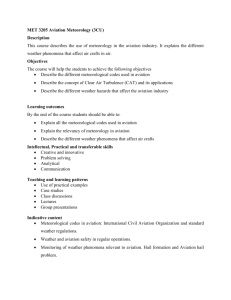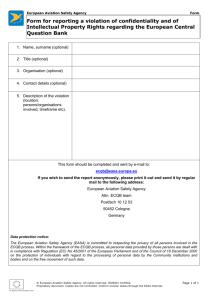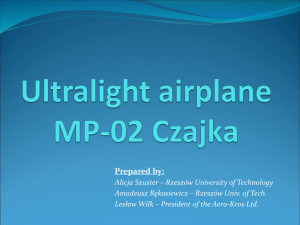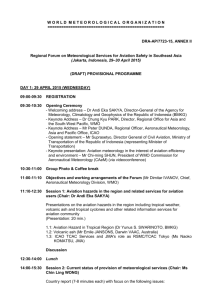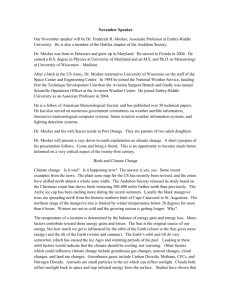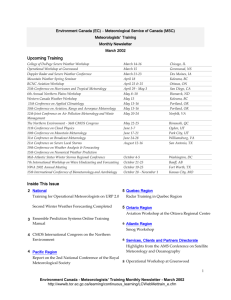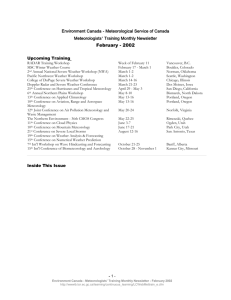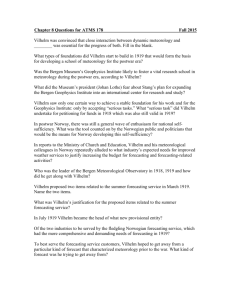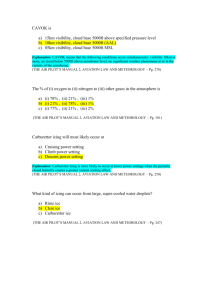Chapter 07 Questions
advertisement
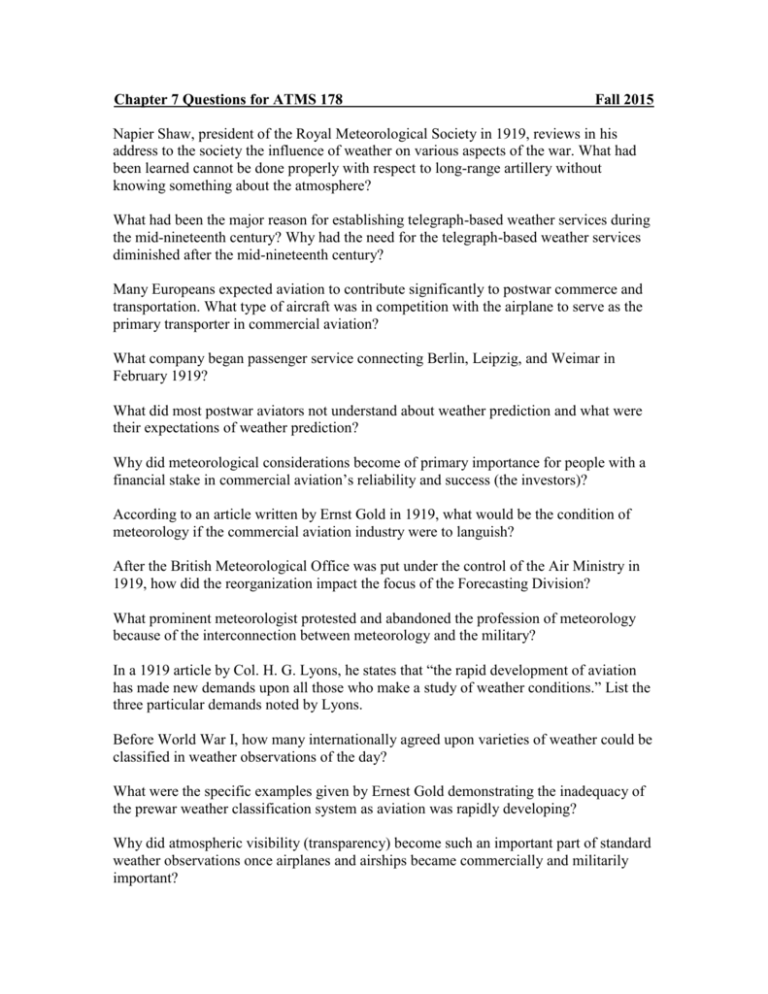
Chapter 7 Questions for ATMS 178 Fall 2015 Napier Shaw, president of the Royal Meteorological Society in 1919, reviews in his address to the society the influence of weather on various aspects of the war. What had been learned cannot be done properly with respect to long-range artillery without knowing something about the atmosphere? What had been the major reason for establishing telegraph-based weather services during the mid-nineteenth century? Why had the need for the telegraph-based weather services diminished after the mid-nineteenth century? Many Europeans expected aviation to contribute significantly to postwar commerce and transportation. What type of aircraft was in competition with the airplane to serve as the primary transporter in commercial aviation? What company began passenger service connecting Berlin, Leipzig, and Weimar in February 1919? What did most postwar aviators not understand about weather prediction and what were their expectations of weather prediction? Why did meteorological considerations become of primary importance for people with a financial stake in commercial aviation’s reliability and success (the investors)? According to an article written by Ernst Gold in 1919, what would be the condition of meteorology if the commercial aviation industry were to languish? After the British Meteorological Office was put under the control of the Air Ministry in 1919, how did the reorganization impact the focus of the Forecasting Division? What prominent meteorologist protested and abandoned the profession of meteorology because of the interconnection between meteorology and the military? In a 1919 article by Col. H. G. Lyons, he states that “the rapid development of aviation has made new demands upon all those who make a study of weather conditions.” List the three particular demands noted by Lyons. Before World War I, how many internationally agreed upon varieties of weather could be classified in weather observations of the day? What were the specific examples given by Ernest Gold demonstrating the inadequacy of the prewar weather classification system as aviation was rapidly developing? Why did atmospheric visibility (transparency) become such an important part of standard weather observations once airplanes and airships became commercially and militarily important? Was the prewar standard of making and collecting weather observations once or twice during the course of a day adequate for the needs of commercial aviation? Why or why not? Meteorologists came up with a new type of forecast during World War I which became an absolute necessity to support aviation operations. Give the name of the forecast and its definition. The expected increase in quantity and frequency of exchanges of weather information for both sending observations to central forecasting bureaus and disseminating predictions necessitated changes in ________ systems. Fill in the blank. Of the two aspects of weather forecasting; (1) routine and classification, or (2) theoretical or conceptual atmospheric models, which received much less attention from meteorologists in 1919? Shaw and some other meteorologists, claimed that wartime experiences revealed the limitations of forecasting based on what? What three aspects of weather analysis and forecasting did meteorologists need to change at the start of the new epoch in their field if they were to begin resolving the tensions that existed between the state of meteorology and its social purpose?


